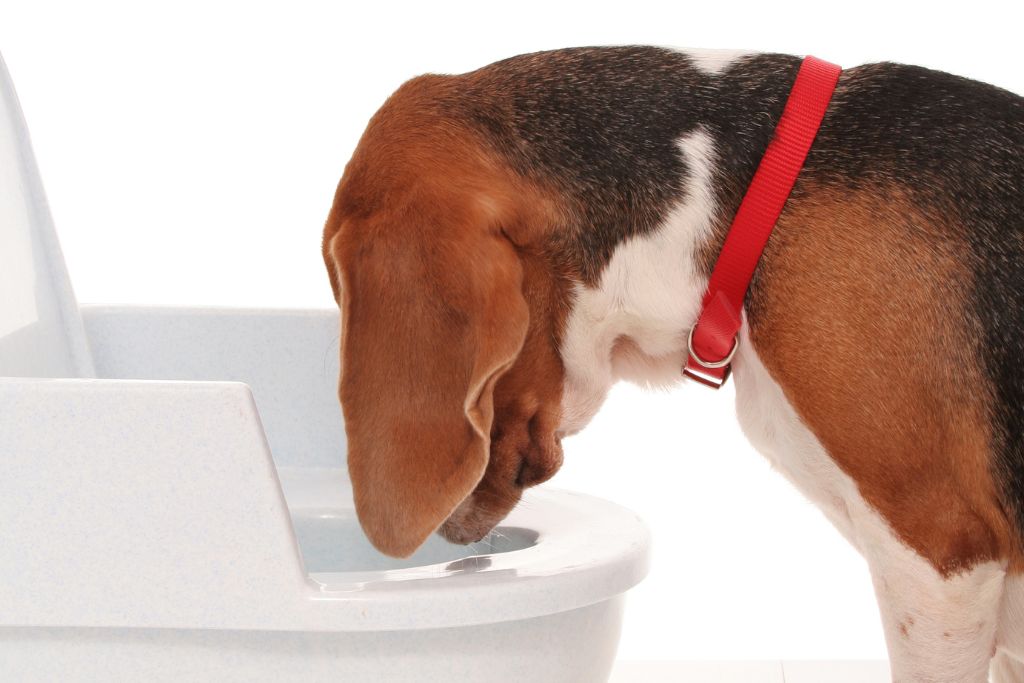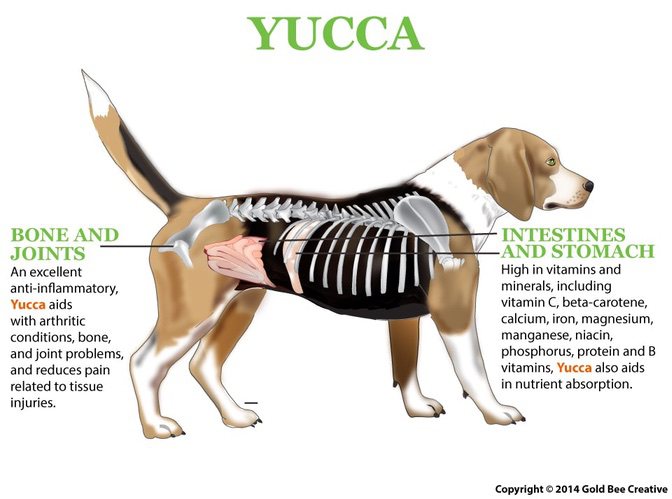discomfort support

free shipping over $100 (USA & Canada)
1-877-937-4372 the pet expert hotline

Acid reflux in dogs is defined as the uncontrollable reverse flow of gastric or intestinal fluids into the esophagus. This issue, also known as Gastroesophageal reflux (GER), is relatively common in dogs of any age. However, acid reflux happens more often in younger pups.
The relaxation of the lower esophageal sphincter – a muscle that works as a valve between the esophagus and the stomach – can cause GER. Chronic vomiting episodes can also cause acid reflux, as this repetitive release of stomach contents, which includes acid, bile salts, and other juices of the gastrointestinal tract, can cause inflammation of the muscle at the base of the esophagus. Younger dogs have sphincters still in development, which puts them at greater risk of acid reflux.
Hiatal hernia is a condition that can also be associated with acid reflux in dogs. This issue can be congenital or acquired, and it happens more often in puppies under one year old. A hiatus hernia occurs when part of the stomach is pushed through the sphincter, forming a protrusion in the diaphragm.
Improper positioning during the administration of anesthetics can also cause acid reflux, as it can cause the sphincter’s relaxation, putting the patient’s life at risk.
Most of the time, dogs with acid reflux won’t act sick and will only show subtle signs until vomiting of bile happens. It is also common for the signs to present themselves as the regurgitation of undigested food shortly after eating.
If a vomiting dog is left untreated, this can cause continuous inflammation of the esophagus, leading to pain when swallowing. The discomfort can affect your little one’s appetite, which can bring on other issues. However, not all dogs will vomit or regurgitate. Some dogs will only show subtle lip licking, decreased appetite, teeth grinding, and restlessness.

It can be challenging to diagnose acid reflux in dogs since, most of the time, the symptoms are subtle and similar to those of many other conditions. However, a veterinarian may choose to perform a comprehensive physical exam on your little one. The specialist may also request imaging exams like x-rays and esophagoscopy to determine if changes in the mucus of the esophagus are consistent with inflammation caused by acid reflux.
With a confirmed diagnosis, the veterinarian might prescribe medications, such as the ones that control acid production and/or improve the movement of stomach contents and strengthens the sphincter. However, a change in diet is the most crucial aspect of addressing GER in dogs.
Treatment for acid reflux in dogs can be continued entirely at home, and it might involve withholding food for one or two days. You can then implement a restricted diet low in fat and protein and offered in small quantities multiple times a day. Protein stimulates the production of gastric acids, and fat weakens the sphincter, which is why a low-fat and low-protein diet is ideal.
You can add Yucca and TumFlora to your little one’s regimen for extra support.
NHV Yucca acts as a natural anti-inflammatory and helps relieve any discomfort associated with acid reflux. This herbal extract can also help promote healthy gastrointestinal function and digestion.
NHV TumFlora is a herbal blend designed to help improve intestinal flora and gut health. This formula also contains highly nutritious herbs that can help with inflammation of the digestive tract.
discomfort support

Discomfort Relief, Digestive Support, and Dog Appetite Booster
buy 2 and save $3
3 month supply for a small to medium size
Yucca for dogs is an all-natural supplement that can be helpful in many circumstances by providing symptom relief related to inflammation, discomfort, and loss of appetite.


Yucca for dogs is an all-natural supplement that can be helpful in many circumstances by providing symptom relief related to inflammation, discomfort, and loss of appetite.

Yucca root is widely used in dog food as well as in other pet foods. It is an herb that is highly nutritive as it is rich in vitamin C, beta-carotene, B vitamins, magnesium, iron, calcium, manganese, protein, niacin, and phosphorus. Yucca contains two very beneficial compounds: sarsasapogenin and smilagenin. These two compounds work on the mucous membranes of the small intestine. These compounds help with the penetration and absorption of minerals and vitamins. Sarsasapogenin and Smilagenin are known as steroidal saponins (phytosterols), which act as precursors to corticosteroids produced naturally by the body.
Steroidal-saponins support the immune function of the body while stimulating and supporting the production of its own corticosteroids and corticosteroid–related hormones. Due to this action, studies conducted on yucca have shown that it may be beneficial and effective for discomfort and inflammation in conditions such as arthritis. Yucca may also be effective as an appetite booster in dogs and may also help reduce the production of urease, which contributes to the unpleasant odors of urine and feces in some dogs.

Yucca for dogs is commonly used for supporting arthritis, as an anti-inflammatory, nutritive, antitumor, and digestive. Yucca for dogs is considered a nutritive herb because it is rich in vitamins and minerals like vitamin C, beta-carotene, B vitamins, magnesium, iron, calcium, manganese, protein, niacin, and phosphorus.

Select your pet's weight to determine the correct dose.
To be taken twice daily. Determine your pet’s weight and then use the easy chart below to determine the correct dose. This is the minimum dosage.
Pet's Weight Dosage
0 - 15 lb = 0.5 ml
16 - 30 lb = 1.0 ml
31 - 45 lb = 1.5 ml
46 - 60 lb = 2.0 ml
61 - 75 lb = 2.5 ml
Over 75 lb = 3.0 ml
How to Administer: Shake well before use. The easiest method is to use the dropper provided and place the drops into your pet’s food or favorite treat. You can also use the dropper and squirt directly into the pet’s mouth. Some pets can be finicky, if this occurs consider hiding the drops in foods most pet’s love such as fish, chicken or yogurt or a favorite treat. If your pet only eats dry food then soak a few kibbles at feeding time.
For Best Results: Herbal dietary supplements are beneficial to the health and well-being of your pet and are safe for long-term use. Every pet responds to natural herbal supplements differently, therefore it is important to be consistent and administer the product daily. Supplements generally take two to four weeks to take effect, however this will vary from one animal to the next.
Product Storage: All NHV Natural Pet Products are pure herbal extracts and contain no artificial additives, preservatives or coloring. Shelf life after opening is 6 months and must be refrigerated after opening.
Cautions and Contraindications: Do not use Yucca in pregnant or nursing animals. Speak to your vet before using our products. A second visit is recommended if your pet’s condition does not improve, or deteriorates after continued use of the supplements. All information provided by NHV Natural Pet Products is for educational purposes only.
Yucca root is widely used in dog food as well as in other pet foods. It is an herb that is highly nutritive as it is rich in vitamin C, beta-carotene, B vitamins, magnesium, iron, calcium, manganese, protein, niacin, and phosphorus. Yucca contains two very beneficial compounds: sarsasapogenin and smilagenin. These two compounds work on the mucous membranes of the small intestine. These compounds help with the penetration and absorption of minerals and vitamins. Sarsasapogenin and Smilagenin are known as steroidal saponins (phytosterols), which act as precursors to corticosteroids produced naturally by the body.
Steroidal-saponins support the immune function of the body while stimulating and supporting the production of its own corticosteroids and corticosteroid–related hormones. Due to this action, studies conducted on yucca have shown that it may be beneficial and effective for discomfort and inflammation in conditions such as arthritis. Yucca may also be effective as an appetite booster in dogs and may also help reduce the production of urease, which contributes to the unpleasant odors of urine and feces in some dogs.

Yucca for dogs is commonly used for supporting arthritis, as an anti-inflammatory, nutritive, antitumor, and digestive. Yucca for dogs is considered a nutritive herb because it is rich in vitamins and minerals like vitamin C, beta-carotene, B vitamins, magnesium, iron, calcium, manganese, protein, niacin, and phosphorus.

Select your pet's weight to determine the correct dose.
To be taken twice daily. Determine your pet’s weight and then use the easy chart below to determine the correct dose. This is the minimum dosage.
Pet's Weight Dosage
0 - 15 lb = 0.5 ml
16 - 30 lb = 1.0 ml
31 - 45 lb = 1.5 ml
46 - 60 lb = 2.0 ml
61 - 75 lb = 2.5 ml
Over 75 lb = 3.0 ml
How to Administer: Shake well before use. The easiest method is to use the dropper provided and place the drops into your pet’s food or favorite treat. You can also use the dropper and squirt directly into the pet’s mouth. Some pets can be finicky, if this occurs consider hiding the drops in foods most pet’s love such as fish, chicken or yogurt or a favorite treat. If your pet only eats dry food then soak a few kibbles at feeding time.
For Best Results: Herbal dietary supplements are beneficial to the health and well-being of your pet and are safe for long-term use. Every pet responds to natural herbal supplements differently, therefore it is important to be consistent and administer the product daily. Supplements generally take two to four weeks to take effect, however this will vary from one animal to the next.
Product Storage: All NHV Natural Pet Products are pure herbal extracts and contain no artificial additives, preservatives or coloring. Shelf life after opening is 6 months and must be refrigerated after opening.
Cautions and Contraindications: Do not use Yucca in pregnant or nursing animals. Speak to your vet before using our products. A second visit is recommended if your pet’s condition does not improve, or deteriorates after continued use of the supplements. All information provided by NHV Natural Pet Products is for educational purposes only.
ibd support

Parasite Cleanser and Diarrhea Relief
bundle and save with pet expert kits
3 month supply for a small to medium size pet
Inflammatory bowel disease in dogs and cats (IBD) can be caused by a variety of reasons, including a parasitic or bacterial infection. Our Pet Experts have put together a comprehensive IBD support bundle, which includes natural support for overall gastrointestinal care, a gentle parasite aid, and effective natural help for diarrhea in pets.


Inflammatory bowel disease in dogs and cats (IBD) can be caused by a variety of reasons, including a parasitic or bacterial infection. Our Pet Experts have put together a comprehensive IBD support bundle, which includes natural support for overall gastrointestinal care, a gentle parasite aid, and effective natural help for diarrhea in pets.

Inflammatory Bowel Disease in dogs and cats happens when the GI tract is in a constant state of inflammation and irritation. This can damage the digestive tract and prevent your IBD dog or cat’s body from absorbing nutrients. Common symptoms of IBD in cats and dogs include vomiting, diarrhea, and weight loss. The exact reason of inflammatory bowel disease in dogs and cats is unknown, but it may be due to genetic abnormalities, food allergies, parasites and autoimmune disorders. Cats and dogs who have been infected with giardia may also develop inflammation in the intestinal tract.
Whatever the reason your pet is suffering from IBD, the NHV IBD comfort kit can help ease their symptoms and begin healing. The NHV Inflammatory Bowel Disease Comfort Kit helps soothe IBD in Dogs and Cats through aiding in a variety of ways:
Benefits of Inulin PK
Feeding your pet Inulin-PK helps remove any parasites, and also contains anti-inflammatory herbs that help with their digestion.
Benefits of Plantaeris
Feeding Plantaeris will help your pet with diarrhea. It also has herbs like chamomile that have been used as a digestive tonic for centuries. Plantaeris can be used long-term to help heal the gut.
Benefits of TumFlora
Feeding TumFlora will help balance the intestinal flora and offer comprehensive inflammatory bowel disease support
The experts at NHV recommend that pets with inflammatory bowel disease maintain consistent use of these supplements (every day, twice a day) to give your pet the best support for IBD. Each works quickly and gently to remedy your pet’s symptoms and improve their quality of life.
Effective on the Causes of IBD
Supplements by NHV work in tandem with any conventional medical treatment to help bring about the best results for your pet. The powerful, natural ingredients that make up Inulin-PK and Plantaeris and TumFlora were selected for their effective and complementary properties.
Feed your pet these powerful supplements as part of a comprehensive plan to address the common underlying causes of IBD and help them feel better.
Top-Quality Support for Your Pet
Your pet deserves the best. NHV supplements are all human-grade. We make them in a GMP-certified and FDA-approved facility. All ingredients are organic or ethically wildcrafted and we use non-GMO vegetable glycerin as a base.
If you’re looking to support a pet with inflammatory bowel disease or irritable bowel syndrome, add these supplements to their care plan. We can’t wait to see your pet feeling well again.
Select your pet's weight to determine the correct dose.
To be taken twice daily. Determine your pet’s weight and then use the easy chart below to determine the correct dose. This is the minimum dosage.
Pet's Weight Dosage
0 - 15 lb = 0.5 ml
16 - 30 lb = 1.0 ml
31 - 45 lb = 1.5 ml
46 - 60 lb = 2.0 ml
61 - 75 lb = 2.5 ml
Over 75 lb = 3.0 ml
For small animals (rabbits, ferrets), avians and reptiles use 1 drop for every 2 lb of body weight.
How to Administer
Shake well before use. The easiest method is to use the dropper provided and place the drops into your pet’s food or favorite treat. You can also use the dropper and squirt directly into the pet’s mouth. Some pets can be finicky, if this occurs consider hiding the drops in foods most pet’s love such as fish, chicken or yogurt or a favorite treat. If your pet only eats dry food then soak a few kibbles at feeding time.
For Best Results
Herbal dietary supplements are beneficial to the health and well-being of your pet and are safe for long-term use. Every pet responds to natural herbal supplements differently, therefore it is important to be consistent and administer the product daily. Supplements generally take two to four weeks to take effect, however this will vary from one animal to the next.
Product Storage
All NHV Natural Pet Products are pure herbal extracts and contain no artificial additives, preservatives or coloring. Shelf life after opening is 6 months and must be refrigerated after opening.
Cautions and Contraindications
Do not use in pregnant or nursing animals.
All information provided by NHV Natural Pet Products is for educational purposes only.
Inflammatory Bowel Disease in dogs and cats happens when the GI tract is in a constant state of inflammation and irritation. This can damage the digestive tract and prevent your IBD dog or cat’s body from absorbing nutrients. Common symptoms of IBD in cats and dogs include vomiting, diarrhea, and weight loss. The exact reason of inflammatory bowel disease in dogs and cats is unknown, but it may be due to genetic abnormalities, food allergies, parasites and autoimmune disorders. Cats and dogs who have been infected with giardia may also develop inflammation in the intestinal tract.
Whatever the reason your pet is suffering from IBD, the NHV IBD comfort kit can help ease their symptoms and begin healing. The NHV Inflammatory Bowel Disease Comfort Kit helps soothe IBD in Dogs and Cats through aiding in a variety of ways:
Benefits of Inulin PK
Feeding your pet Inulin-PK helps remove any parasites, and also contains anti-inflammatory herbs that help with their digestion.
Benefits of Plantaeris
Feeding Plantaeris will help your pet with diarrhea. It also has herbs like chamomile that have been used as a digestive tonic for centuries. Plantaeris can be used long-term to help heal the gut.
Benefits of TumFlora
Feeding TumFlora will help balance the intestinal flora and offer comprehensive inflammatory bowel disease support
The experts at NHV recommend that pets with inflammatory bowel disease maintain consistent use of these supplements (every day, twice a day) to give your pet the best support for IBD. Each works quickly and gently to remedy your pet’s symptoms and improve their quality of life.
Effective on the Causes of IBD
Supplements by NHV work in tandem with any conventional medical treatment to help bring about the best results for your pet. The powerful, natural ingredients that make up Inulin-PK and Plantaeris and TumFlora were selected for their effective and complementary properties.
Feed your pet these powerful supplements as part of a comprehensive plan to address the common underlying causes of IBD and help them feel better.
Top-Quality Support for Your Pet
Your pet deserves the best. NHV supplements are all human-grade. We make them in a GMP-certified and FDA-approved facility. All ingredients are organic or ethically wildcrafted and we use non-GMO vegetable glycerin as a base.
If you’re looking to support a pet with inflammatory bowel disease or irritable bowel syndrome, add these supplements to their care plan. We can’t wait to see your pet feeling well again.
Select your pet's weight to determine the correct dose.
To be taken twice daily. Determine your pet’s weight and then use the easy chart below to determine the correct dose. This is the minimum dosage.
Pet's Weight Dosage
0 - 15 lb = 0.5 ml
16 - 30 lb = 1.0 ml
31 - 45 lb = 1.5 ml
46 - 60 lb = 2.0 ml
61 - 75 lb = 2.5 ml
Over 75 lb = 3.0 ml
For small animals (rabbits, ferrets), avians and reptiles use 1 drop for every 2 lb of body weight.
How to Administer
Shake well before use. The easiest method is to use the dropper provided and place the drops into your pet’s food or favorite treat. You can also use the dropper and squirt directly into the pet’s mouth. Some pets can be finicky, if this occurs consider hiding the drops in foods most pet’s love such as fish, chicken or yogurt or a favorite treat. If your pet only eats dry food then soak a few kibbles at feeding time.
For Best Results
Herbal dietary supplements are beneficial to the health and well-being of your pet and are safe for long-term use. Every pet responds to natural herbal supplements differently, therefore it is important to be consistent and administer the product daily. Supplements generally take two to four weeks to take effect, however this will vary from one animal to the next.
Product Storage
All NHV Natural Pet Products are pure herbal extracts and contain no artificial additives, preservatives or coloring. Shelf life after opening is 6 months and must be refrigerated after opening.
Cautions and Contraindications
Do not use in pregnant or nursing animals.
All information provided by NHV Natural Pet Products is for educational purposes only.
IBD support for dogs


Natural Support for IBD in dogs
buy 2 and save $3
3 month supply for a small to medium size pet.
Is your furkiddo vomiting, having watery poops or is too tired to play? They may be suffering from a common gastrointestinal issue in dogs known as Inflammatory Bowel Disease (IBD in dogs). NHV’s TumFlora is a unique vet formulation that contains 100% natural ingredients known to help improve intestinal flora, and helps reduce inflammation of the gut.


Is your furkiddo vomiting, having watery poops or is too tired to play? They may be suffering from a common gastrointestinal issue in dogs known as Inflammatory Bowel Disease (IBD in dogs). NHV’s TumFlora is a unique vet formulation that contains 100% natural ingredients known to help improve intestinal flora, and helps reduce inflammation of the gut.

Like humans, Inflammatory or Irritable Bowel Disease, also known as IBD, is a common gastrointestinal problem in dogs. When your furbaby has IBD, inflammatory cells within their body begin to invade the gastrointestinal (GI) tract. The stomach, small intestine, and large intestine are all part of the GI tract. Once inflammatory cells start to take over the GI tract, a thickening of the intestinal wall can occur, upsetting daily functions like absorption and the movement of food (peristalsis). There is no clear cause for IBD in dogs, but studies show that genetic and external factors can predispose your pet to have IBD. Some additional contributing factors may be chronic irritation of the intestines caused by constant vomiting and diarrhea, food allergies, parasites, and autoimmune disorders.
How TumFlora Supports GI Tract Health
TumFlora is a natural herbal vet formulation designed to help improve intestinal flora. In addition to helping improve intestinal flora, and helping with inflammation of the digestive tract, TumFlora contains herbs that are highly nutritious like slippery elm to further help your furbaby heal. Slippery elm is high in vitamins and minerals such as vitamin A, B complex, C, K, calcium, magnesium and sodium. The gentle defense against microorganisms and anti-fungal properties of herbs like oregon grape aid the body to fight off infections. Finally, herbs like fennel and chamomile help to relieve stomach cramps and indigestion and help with overall discomfort.
This soothing liquid formulation is easy to administer and helps maintain a healthy gut. In addition to helping IBD in dogs, TumFlora is also useful for pets suffering from food allergies, gastrointestinal ulcers and bacterial, gut infections. TumFlora is also a great addition to your pet’s daily regimen as a proactive approach for a healthy gut.
Symptoms of IBD in dogs
Dogs will occasionally vomit or have diarrhea because something doesn’t sit right with their tummies, or maybe they ate too much or too little that day. But if your furkiddo begins to vomit and their poops are runny on a regular basis then it could be IBD. Keep your eye out for these additional symptoms:
Typically your vet will do a full-body exam, check your dog’s history, conduct a blood panel, take a stool sample, and possibly opt for x-rays and/or an ultrasound. IBD in dogs can be tough to diagnose because your vet will have to check for a variety of conditions as well as vital organ functions before they can confirm diagnosis. Other health conditions that have similar symptoms to IBD are GI parasites, kidney or liver disease, pancreatitis, cancer, or foreign substances and objects in the intestines. To confirm IBD, your vet may eventually conduct a biopsy on your pup's stomach and/or intestinal tract.
Additional Holistic Support for Inflammatory Bowel Disease in Dogs
A combination of vet-prescribed medication and nutritional therapy is often recommended to alleviate symptoms of inflammatory bowel disease. If your pet is prone to inflammatory bowel disease in dogs, changing your dog’s diet to a more gut-friendly one is recommended. Click here, if you would like a personalized nutrition plan tailored to your pet's unique needs.
At NHV, we are a team of holistic veterinarians, pet experts, and animal enthusiasts. Get in touch with us if you have any questions or concerns about your pup’s GI tract health or need extra support.
Made with the finest, organically grown, or ethically harvested herbs. Made specifically for pets, vet-formulated, and vet approved.
Ashwagandha also known as Indian ginseng has a long history of use for its anti-inflammatory properties and ability to defend against microogranisms. It may help with anxiety and stress, immune support, and promote healthy cholesterol and blood sugar levels.
Boswellia a.k.a. Indian frankincense has effective discomfort relieving and anti-inflammatory properties which may be beneficial for alleviating symptoms of inflammatory bowel disease in dogs, asthma, and osteoarthritis.
Chamomile has been used as a digestive tonic for centuries to soothe and heal the digestive tract. It is an excellent calming agent with anti-inflammatory, analgesic, antispasmodic, and sedative properties to soothe chronic or acute gastric disorders and IBD in dogs.
Fennel's nutrient dense properties are especially beneficial for digestive problems, relaxing spasms, relieving cramps, and helping to restore appetite.
Indian Gooseberry has been used for over millennia in Ayurvedic medicine to help alleviate symptoms of heartburn, diarrhea, and nausea.
Licorice is an herb with an affinity for the digestive, respiratory, and endocrine systems. It helps to cleanse the blood, lubricate and protect mucous membranes, and ease tissue damage in the upper digestive tract.
Marshmallow is a mucilaginous herb whose anti-inflammatory and diuretic properties help to soothe and soften irritated tissues. It is beneficial for gastroenteritis, peptic and duodenal ulceration, ulcerative colitis, and enteritis.
Oregon Grape is an anti-parasitic tonic that helps combat various forms of fungal and bacterial infections. It helps to relieve indigestions and malabsorption.
Slippery Elm supports eliminating toxins and waste by lubricating the digestive tract. It is a rich source of vitamins (A, B complex, C, K) and minerals (calcium, magnesium, and sodium). It may help alleviate symptoms of gastritis, colitis, and diarrhea.
Select your pet's weight to determine the correct dose.
To be taken twice daily. Determine your pet’s weight and then use the easy chart below to determine the correct dose. This is the minimum dosage.
Pet's Weight Dosage
0 - 15 lb = 0.5 ml
16 - 30 lb = 1.0 ml
31 - 45 lb = 1.5 ml
46 - 60 lb = 2.0 ml
61 - 75 lb = 2.5 ml
Over 75 lb = 3.0 ml
How to Administer
Shake well before use. The easiest method is to use the dropper provide and places the drops into your pet’s food or favorite treat. You can also use the dropper and squirt directly into the pet’s mouth.
Some pets can be finicky, if this occurs consider hiding the drops in foods most pet’s love such as fish, chicken or yogurt or a favorite treat. If your pet only eats dry food then soak a few kibbles at feeding time.
For Best Results
Herbal dietary supplements are beneficial to the health and wellbeing of your pet and are safe for long-term use. Every pet responds to natural herbal supplements differently, therefore it is important to be consistent and administer the product daily. Supplements generally take two to four weeks to take effect, however this will vary from one animal to the next.
Product Storage
All NHV Natural Pet Products are pure herbal extracts and contain no artificial additives, preservatives or coloring. Shelf life after opening is 6 months and must be refrigerated after opening.
Cautions and Contraindications: Do not use TumFlora in pregnant or nursing animals. Speak to your vet before using our products. A second visit is recommended if your pet’s condition does not improve, or deteriorates after continued use of the supplements.
If you would like a home-cooked nutrition plan, our in-house veterinarian Dr. Amanda can formulate a plan specific to your pet’s health requirements.
Like humans, Inflammatory or Irritable Bowel Disease, also known as IBD, is a common gastrointestinal problem in dogs. When your furbaby has IBD, inflammatory cells within their body begin to invade the gastrointestinal (GI) tract. The stomach, small intestine, and large intestine are all part of the GI tract. Once inflammatory cells start to take over the GI tract, a thickening of the intestinal wall can occur, upsetting daily functions like absorption and the movement of food (peristalsis). There is no clear cause for IBD in dogs, but studies show that genetic and external factors can predispose your pet to have IBD. Some additional contributing factors may be chronic irritation of the intestines caused by constant vomiting and diarrhea, food allergies, parasites, and autoimmune disorders.
How TumFlora Supports GI Tract Health
TumFlora is a natural herbal vet formulation designed to help improve intestinal flora. In addition to helping improve intestinal flora, and helping with inflammation of the digestive tract, TumFlora contains herbs that are highly nutritious like slippery elm to further help your furbaby heal. Slippery elm is high in vitamins and minerals such as vitamin A, B complex, C, K, calcium, magnesium and sodium. The gentle defense against microorganisms and anti-fungal properties of herbs like oregon grape aid the body to fight off infections. Finally, herbs like fennel and chamomile help to relieve stomach cramps and indigestion and help with overall discomfort.
This soothing liquid formulation is easy to administer and helps maintain a healthy gut. In addition to helping IBD in dogs, TumFlora is also useful for pets suffering from food allergies, gastrointestinal ulcers and bacterial, gut infections. TumFlora is also a great addition to your pet’s daily regimen as a proactive approach for a healthy gut.
Symptoms of IBD in dogs
Dogs will occasionally vomit or have diarrhea because something doesn’t sit right with their tummies, or maybe they ate too much or too little that day. But if your furkiddo begins to vomit and their poops are runny on a regular basis then it could be IBD. Keep your eye out for these additional symptoms:
Typically your vet will do a full-body exam, check your dog’s history, conduct a blood panel, take a stool sample, and possibly opt for x-rays and/or an ultrasound. IBD in dogs can be tough to diagnose because your vet will have to check for a variety of conditions as well as vital organ functions before they can confirm diagnosis. Other health conditions that have similar symptoms to IBD are GI parasites, kidney or liver disease, pancreatitis, cancer, or foreign substances and objects in the intestines. To confirm IBD, your vet may eventually conduct a biopsy on your pup's stomach and/or intestinal tract.
Additional Holistic Support for Inflammatory Bowel Disease in Dogs
A combination of vet-prescribed medication and nutritional therapy is often recommended to alleviate symptoms of inflammatory bowel disease. If your pet is prone to inflammatory bowel disease in dogs, changing your dog’s diet to a more gut-friendly one is recommended. Click here, if you would like a personalized nutrition plan tailored to your pet's unique needs.
At NHV, we are a team of holistic veterinarians, pet experts, and animal enthusiasts. Get in touch with us if you have any questions or concerns about your pup’s GI tract health or need extra support.
Made with the finest, organically grown, or ethically harvested herbs. Made specifically for pets, vet-formulated, and vet approved.
Ashwagandha also known as Indian ginseng has a long history of use for its anti-inflammatory properties and ability to defend against microogranisms. It may help with anxiety and stress, immune support, and promote healthy cholesterol and blood sugar levels.
Boswellia a.k.a. Indian frankincense has effective discomfort relieving and anti-inflammatory properties which may be beneficial for alleviating symptoms of inflammatory bowel disease in dogs, asthma, and osteoarthritis.
Chamomile has been used as a digestive tonic for centuries to soothe and heal the digestive tract. It is an excellent calming agent with anti-inflammatory, analgesic, antispasmodic, and sedative properties to soothe chronic or acute gastric disorders and IBD in dogs.
Fennel's nutrient dense properties are especially beneficial for digestive problems, relaxing spasms, relieving cramps, and helping to restore appetite.
Indian Gooseberry has been used for over millennia in Ayurvedic medicine to help alleviate symptoms of heartburn, diarrhea, and nausea.
Licorice is an herb with an affinity for the digestive, respiratory, and endocrine systems. It helps to cleanse the blood, lubricate and protect mucous membranes, and ease tissue damage in the upper digestive tract.
Marshmallow is a mucilaginous herb whose anti-inflammatory and diuretic properties help to soothe and soften irritated tissues. It is beneficial for gastroenteritis, peptic and duodenal ulceration, ulcerative colitis, and enteritis.
Oregon Grape is an anti-parasitic tonic that helps combat various forms of fungal and bacterial infections. It helps to relieve indigestions and malabsorption.
Slippery Elm supports eliminating toxins and waste by lubricating the digestive tract. It is a rich source of vitamins (A, B complex, C, K) and minerals (calcium, magnesium, and sodium). It may help alleviate symptoms of gastritis, colitis, and diarrhea.
Select your pet's weight to determine the correct dose.
To be taken twice daily. Determine your pet’s weight and then use the easy chart below to determine the correct dose. This is the minimum dosage.
Pet's Weight Dosage
0 - 15 lb = 0.5 ml
16 - 30 lb = 1.0 ml
31 - 45 lb = 1.5 ml
46 - 60 lb = 2.0 ml
61 - 75 lb = 2.5 ml
Over 75 lb = 3.0 ml
How to Administer
Shake well before use. The easiest method is to use the dropper provide and places the drops into your pet’s food or favorite treat. You can also use the dropper and squirt directly into the pet’s mouth.
Some pets can be finicky, if this occurs consider hiding the drops in foods most pet’s love such as fish, chicken or yogurt or a favorite treat. If your pet only eats dry food then soak a few kibbles at feeding time.
For Best Results
Herbal dietary supplements are beneficial to the health and wellbeing of your pet and are safe for long-term use. Every pet responds to natural herbal supplements differently, therefore it is important to be consistent and administer the product daily. Supplements generally take two to four weeks to take effect, however this will vary from one animal to the next.
Product Storage
All NHV Natural Pet Products are pure herbal extracts and contain no artificial additives, preservatives or coloring. Shelf life after opening is 6 months and must be refrigerated after opening.
Cautions and Contraindications: Do not use TumFlora in pregnant or nursing animals. Speak to your vet before using our products. A second visit is recommended if your pet’s condition does not improve, or deteriorates after continued use of the supplements.
If you would like a home-cooked nutrition plan, our in-house veterinarian Dr. Amanda can formulate a plan specific to your pet’s health requirements.